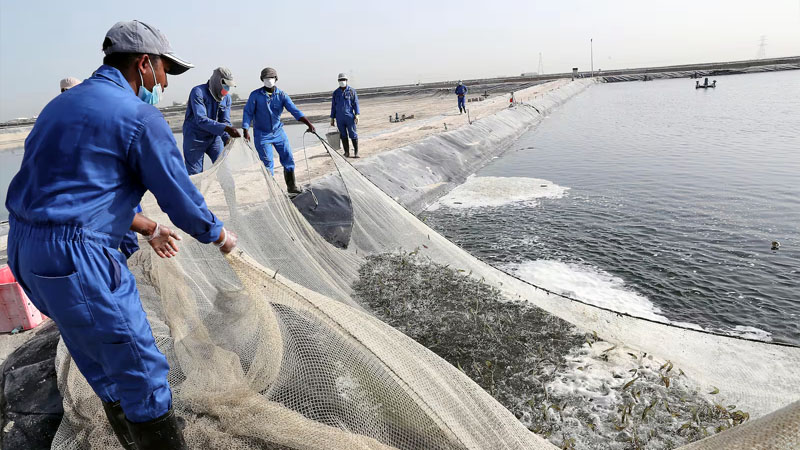Exclusive content

The UAE’s position as the 16th largest importer of Vietnamese shrimp between 2018 and 2022 may seem modest, accounting for only 0.5% of Vietnam’s total shrimp export value. Nevertheless, this market represents a fascinating potential for growth, particularly in light of the recent Comprehensive Economic Partnership Agreement (CEPA) signed between Vietnam and the UAE. Such agreements often unlock lucrative opportunities, and Vietnam’s shrimp sector appears poised for an upward trajectory.
A Small Yet Growing Market
Over the past five years, Vietnam has consistently exported approximately USD 20 million worth of shrimp annually to the UAE. The figures for 2023 suggest an encouraging trend: in the first nine months alone, shrimp exports reached USD 7.4 million, marking a 34% increase compared to the same period the previous year. As the demographic landscape shifts and consumer preferences lean heavily toward seafood—a trend amplified by the burgeoning young population—the UAE could prove to be an increasingly viable market for Vietnamese shrimp.
Dominating the UAE’s shrimp market are India, China, and Ecuador. India currently commands 60%-70% of market share, having leveraged tariff advantages to bolster its position. Ecuador, having entered the fray more recently, holds approximately 15%. Vietnamese shrimp, meanwhile, represent a mere 5%-7% of the market, indicating substantial room for growth. However, the CEPA agreement is anticipated to provide Vietnamese exporters with critical tax incentives, potentially allowing them to capture a larger slice of this competitive market.
Advantages of the CEPA Agreement
The CEPA marks a significant milestone as Vietnam’s first free trade agreement with an Arab nation, ushering in a chapter of enhanced bilateral relations. With the UAE set to eliminate tariffs on 99% of Vietnamese exports, trade liberalization will benefit sectors beyond shrimp. Provisions to facilitate trade and investment align with global trends toward digital transformation and green development, further enhancing the appeal of shrimp exports.
The UAE’s strategic geographical position, combined with its modern logistics and seaport infrastructure, positions it as a critical gateway for Vietnamese shrimp not only to the local market but also to broader regions including the Middle East, Africa, and Europe. The rising income levels and urbanization add an additional layer of potential, as increasing disposable income fuels consumer demand for seafood. Notably, the surge in online searches for seafood products indicates a growing interest in shrimp and other marine delicacies.
Challenges Ahead
Despite the promising landscape, the UAE’s market remains competitive, characterized by intense rivalry in both price and quality. For Vietnamese exporters to thrive, adopting advanced production technologies is paramount, as is streamlining management practices to curtail intermediate costs. Furthermore, establishing a Halal certification system for shrimp products will be essential for accessing this particular market.